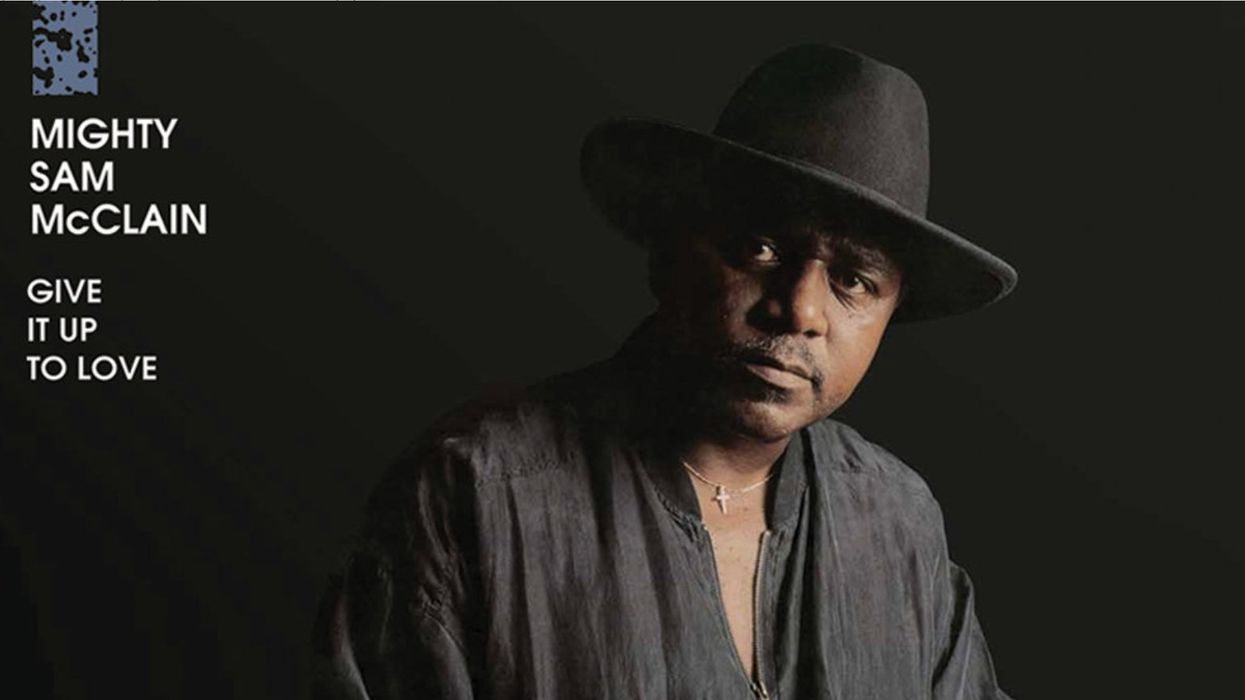Regular PG readers know that the magazine’s slogan is “the relentless pursuit of tone.” It’s proudly emblazoned below our logo on every cover. But, at the risk of getting irate mail from gearheads and being branded a heretic by management, I must say that slogan does not describe my personal guitar odyssey. For the nearly five decades I’ve been playing, I’ve been in relentless pursuit of inspiration. Tone is along for the ride, but it’s certainly not the driver. Discovering a new musical concept or making a technical breakthrough is more exciting for me than acquiring a new piece of gear.
Don’t get me wrong—I have a nice collection of professional instruments and several cool amps, and I love playing them all. But it’s learning to do something new with what I already own that really turns me on.
Let me give you an example. Here’s an idea that completely changed the way I think about the guitar and opened the door to a world of new sounds. It only cost me several sets of fresh strings, yet the concept changed how I play, arrange, and record music. The idea is simple, yet takes a bit of explaining, so bear with me.
British fingerstyle guitarist Martin Simpson first introduced me to the concept of keeping a guitar tuned a whole-step below standard pitch. Tuned this way, the guitar’s open strings are (low to high) D–G–C–F–A–D, rather than the normal E–A–D–G–B–E. Because the intervals remain the same between strings, the fretboard stays completely familiar—the only change is that everything sounds a whole-step lower.
Why tune this way? Simpson uses a lot of open and altered tunings, and, as we’ll see in a moment, it makes a lot of sense to use “D-standard” tuning as the platform to shift into DADGAD, open D, and open G. Over the years I’ve come to appreciate other benefits of D-standard tuning as well.
I’m not proposing that D standard replace standard tuning, but I believe it makes sense to keep an instrument appropriately strung, set up, and tuned a whole-step lower than your other guitars. Ideally, you’d have both an electric and an acoustic configured this way.
Here’s why: D standard allows you to use heavier strings—which offer more volume and sustain—without a significant increase in tension. On an acoustic flattop, try a medium set (.013-.056) tuned a whole-step down. It sounds huge, yet doesn’t feel stiff. A set of stout electric strings—I like a .012-.052 set with a plain 3rd—puts more vibrating nickel or steel over your pickup pole pieces. Again, you get a bigger, richer sound without losing playability or sacrificing your favorite string-bending techniques.
6 | 5 | 4 | 3 | 2 | 1 | |
| Standard Tuning | E | A | D | G | B | E |
| Open G Tuning | D | G | D | G | B | D |
| DADGAD Tuning | D | A | D | G | A | D |
| Open D Tuning | D | A | D | F# | A | D |
| D Standard Tuning | D | G | C | F | A | D |
Transposition is relatively painless when you’re playing with other musicians. Simply raise the song’s key by a whole-step and you’re done. For example, if another guitarist is playing “Knockin’ on Heaven’s Door” in the key of G, mentally snap into the key of A and follow the I-V-ii harmonic structure. You’ll both be in the same key, yet you’ll each be playing different grips. The mixed voicings create a powerful, shifting texture of open and fretted strings that’s much more exciting than hearing two guitarists playing identical voicings throughout a song. If you’ve ever used a capo when playing with other guitarists to shift your voicings away from theirs, you know how cool this sounds.
To convert D standard back to normal tuning, simply slap a capo on the second fret. Now all your voicings line up with a regular guitar, but you still have the enhanced projection and fatter tone of heavier strings.
Consider D standard in the context of open and alternate tunings. Dropping light-gauge strings to enter an open tuning typically results in fret buzz, poor intonation, and a wimpy tone. Thin strings just don’t sound good when they’re slackened, and they’re also harder to keep in tune.
As you can see in the chart above, moving from standard tuning to open G, open D, or DADGAD requires dropping three or four strings a whole-step or half-step.
But if you have a guitar strung heavier and tuned to D standard, you wind up raising three strings to enter open G, open D, or DADGAD. This slight increase in tension works well to physically support the weight of a slide, and you’ll find it easier to get open tunings in tune. The increased tension is small enough that you won’t need to worry about breaking strings or stressing your guitar.
I keep several guitars permanently strung and tuned to D standard, including a Fender Tele and Strat, a cool ’81 Dean V, a Taylor 512c, a custom Wechter roundneck resonator, and a great ’72 Martin D20-12 12-string. The 6-string acoustics sport strings gauged .015-.056, and the electrics range from .012-.052 to .013-.056 (the heavier set is for slide). These gauges let me drop the 6th string a whole-step to “dropped-C” tuning or raise the three strings required to enter open and alternate tunings.
Most guitarists who play 12-string in standard tuning opt for a .010-.047 extra-light set, but thanks to D standard, I can string up the D20-12 with a Martin set gauged .012-.054. This generates a huge, spangly sound. The immortal Lead Belly drop-tuned his big Stella 12-string and that contributed to his enormous tone.
If you haven’t explored the D-standard concept, give it a shot. Most nut slots are big enough to accommodate the slightly thicker strings, so you can jump right in. You might have to make a small truss rod or saddle intonation adjustment—this is true whenever you change string gauges up or down—and you might want to lower your pickup height a tad to compensate for the thicker bass strings, but these tweaks are minor.
D standard gives you a new way to use instruments you already possess, and the concept has the potential to inspire you for years. I’d say that’s worth some relentless pursuit.














